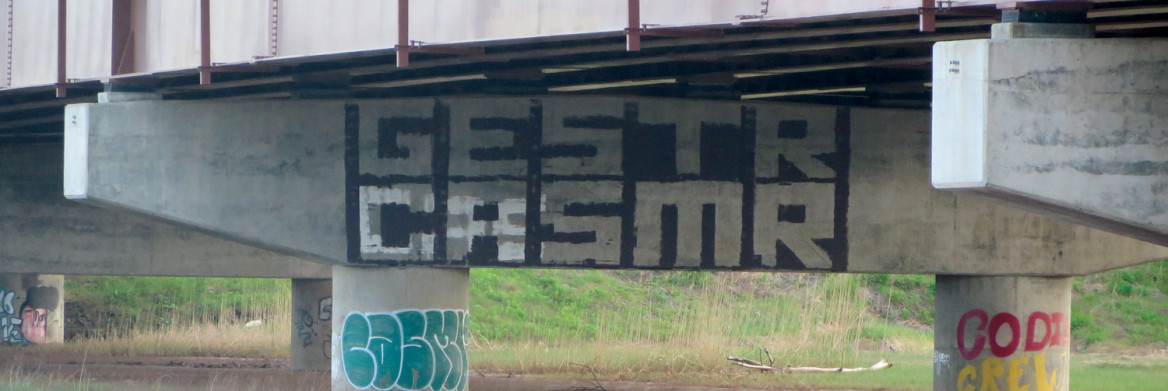Related link
In summer 2014, a surge in graffiti vandalism left downtown Moncton spattered with tags. The spray-painted letters coated underpasses, bus shelters, buildings and fences, defacing private and public property.
"I was noticing graffiti in busy areas, 30 to 40 tags a night from one end of the street to another, and I just thought, 'How are people doing this and we aren't catching them?'
" says Cst. Chris Fader, a patrol officer at the Codiac Regional RCMP detachment in Moncton, N.B.
When he noticed that the same few tags — monikers or nicknames written in a unique style — were appearing night after night, he made it his mission to track down and find the vandals.
Since first becoming interested in graffiti crimes in 2012, Fader has turned into Moncton's go-to graffiti guy. He works closely with the city to meticulously document each instance of graffiti, adding the cases to his self-created database. For each file, he adds photos and follows up with complainants.
That's one thing his mentor, Halifax Regional Police officer Cst. Gerry Murney, drilled into him about solving graffiti cases: "Record everything. Report, record, remove.
"
Murney is part of Halifax police's community response team, and handles most of the city's graffiti cases. He says proactive policing is vital for these types of crimes.
"Many residents don't realize how important reporting can be,
" he says. "Police need to get out there and talk to business associations, property owners, community groups — just get out there and educate them.
"
Following Murney's advice, Fader has fostered relationships with Downtown Moncton Centreville, the local business improvement association. They spend anywhere from $10,000 to $15,000 per year on removing graffiti from public spaces downtown.
"It's a big priority, we don't want our downtown to start feeling derelict or uninviting,
" says Anne Poirier-Basque, director of Downtown Moncton Centreville.
Follow the paint
After becoming frustrated with the amount of graffiti on the streets of Moncton, Fader noticed two tags in particular were repeated the most: "Nax" and "Four. "
"Writers stick around where they live, where they work and where they play,
" says Fader.
With this knowledge in hand, he was able to see a pattern in the tags. They followed a trail from Moncton to a town across the river called Riverview, where the suspects likely lived. Through surveillance footage at one of the graffiti sites, Fader was able to tell that the vandals were young adults.
Being a school liaison officer for the Codiac detachment, Fader approached the schools in Riverview. Through the surveillance footage, they made a tentative identification of "Four" and "Nax." They told Fader that if "Nax" was who they thought, he was now attending Sheridan College in Oakville. But that information wasn't enough to make an arrest. So Fader kept investigating and building evidence.
Building a case
With 15 minutes to spare at the end of a shift, Fader sat down at his desk and did an internet search for "Oakville graffiti." Within a few minutes he spotted a match. In a photo on a local blog, Fader noticed the unmistakable "Nax" tag written on an Oakville bus shelter. It was the same tag that was splattered all over Moncton.
"Once I had that last piece of the puzzle, I decided to dedicate my time to deal with all the prolific writers,
" he says.
Fader was able to arrest "Nax" and tracked down "Four" after he was able to match his shoe prints to the scene of a huge tag on an underpass. Through police interviews, "Four" admitted to his involvement and identified three other writers in the local graffiti subculture.
"Four" was charged for 64 counts of mischief. He subsequently pled guilty and was placed on probation, ordered to perform community service and pay restitution. "Nax" and the other writers faced similar charges.
Fader encourages other officers to take the time to work on graffiti cases in their communities.
"These are solvable crimes,
" he says. "I've successfully prosecuted graffiti writers without ever seeing them do a tag. It can be done, you just have to put the work in.
"
